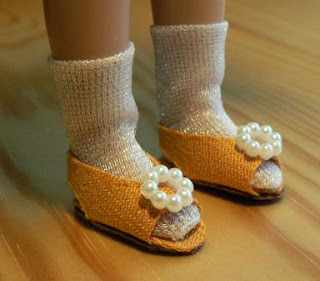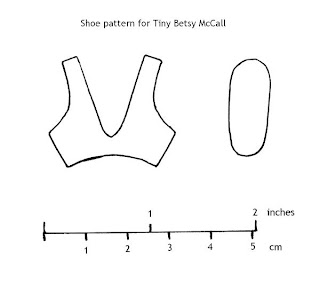The moulds are made of thin copper sheet. Before cutting the sheet (with scissors, which have suffered quite a lot due to this habit), I covered it with clear packaging tape. This is meant for the inside of the mould to ensure that the plastic casting will have shiny surface. The pieces of the mould are held together by normal adhesive tape. Note that there are small pieces of wood under the toe part to keep the moulds straight.

The plastic I'm using is the type you need to heat in order to melt it. The brand name is E-Z Water and the only reason I'm using that is that it's the only brand I have found. The plastic is in the form of small grains.
The plastic is slightly yellow and if it gets too hot, it starts getting darker. I'm using the lowest possible temperature in which I can get it to melt, so the color won't change. Also, if the melted plastic is too hot, it will melt the packaging tape and the adhesive tape holding the moulds together. The result of that is a horrible mess as I once found out. Fortunately, I only managed to ruin the kitchen counter instead of burning myself with the stuff (even in the lowest temperature, it's still hot).
Before pouring the plastic into the mould, I placed a paper flower in the mould. As the flower had a stem, it was easy to hold it in place until the plastic had cooled down enough, so the flower would stay in place by itself.

You need to wait until the plastic has cooled down. Then you need to tear apart the mould to get the casting out. I usually do this when the casting is still a bit warm to touch, but not hot. Leave the casting to cool down properly after removing it from the mould.
Here are two pictures of a finished casting. There are some air bubbles in it, but I have noticed that it is almost impossible to avoid them altogether in castings of this size.


Here are the shoes I made using these castings. The ribbons are made of silk and the inner sole and strap are made of satin that was treated with sealer. The outer sole is again made of leather.

Original Finnish posts: Feb. 20, 2007, and July 7, 2007










